After our brief visit to the upper Yorke Peninsula we headed north to Pt Augusta then down the eastern side of Eyre Peninsula. Being a long weekend, and with Cuttlefest in full swing in Whyalla, we decided to stay away from the crowds and camped at Point Lowly, which sits on Spencer Gulf and features a lighthouse built in 1883. The original lighthouse was a 15m-tall sandstone structure which was raised to 22.8m in 1909. It was electrified and de-manned in 1973 and decommissioned in 1993, but subsequently purchased by the Whyalla Council and reinstated in 1995. We had mainly overcast skies during our stay but on the last morning we caught just a few minutes of rising sun on the lighthouse before it disappeared behind cloud.
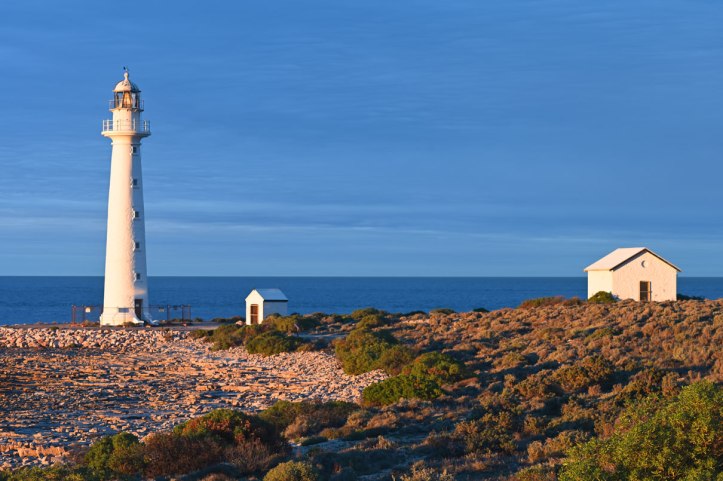
Nearby is the Santos-managed Pt Bonython facility which processes liquid hydrocarbons from the Cooper Basin. A mixture of crude oil and natural gas is pumped through the 659km-long pipeline from Moomba to Pt Bonython. The liquids are then separated into crude oil, naphtha and LPG. Pt Bonython loads about 50 ships per year, with about 70% of its LPG production being exported.
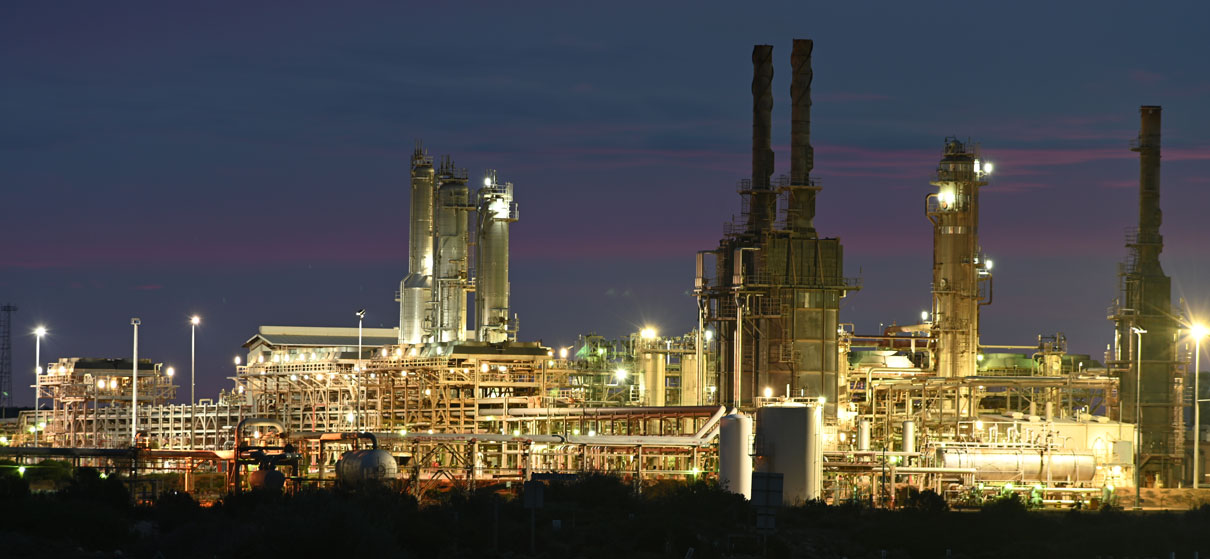

After a very windy drive under cloudy skies we arrived in Cowell, which sits on Franklin Harbour, a 49 square kilometre natural harbour with a channel to the sea just 100m wide. The district was first settled in 1853 and the town was established in 1880. It is the centre of a wheat and sheep farming area, and fishing and oyster farming are also important industries. The town jetty was built in 1882 and tolls were charged on cargo to finance upgrades. The jetty became an important shipping port for the export of produce, and the arrival of passenger ships. One ship offered a five-day cruise around the gulf, leaving from Pt Lincoln and taking in Tumby Bay, Cowell and Wallaroo. A marina was opened in 2022 and as yet appears to have only one yacht berthed there.


Many grand old limestone buildings line the streets, including Franklin Harbour Hotel which was built in 1881, with the second storey added in 1907. The Institute was opened in 1912 and is now used as a cinema, and next door the Council Chambers was built in 1912 as a bank, and had many other uses before being purchased by the Council.

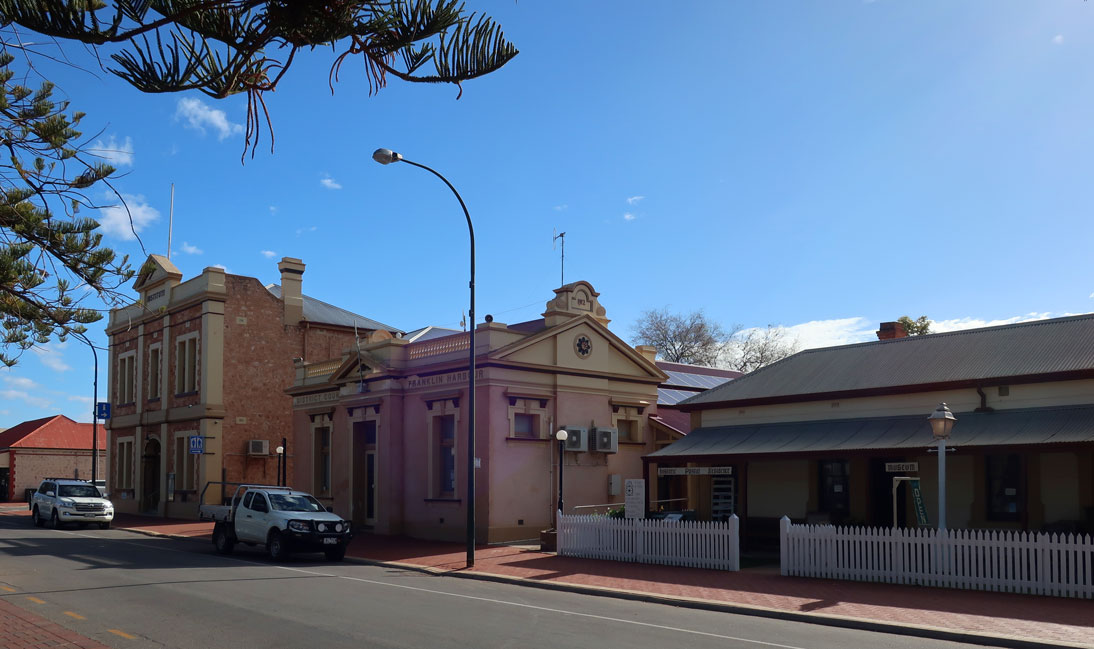
We were delighted to discover unexpected silo art in Cowell which tells the story of local legend Lionel Deer – shearer, sportsman, camel breeder – whose camel, Diamantina, participated in the Cowell Christmas pageant for over 30 years.

Next morning we drove across the peninsula to Elliston on the west coast. The road was one of the best we’ve encountered in SA and carried very little traffic. We took a break at Lock where we saw a mural featuring Sergeant Albert Lock who was killed in Belgium in 1917, aged 30. The town was named in his honour when it was gazetted in 1918, and is believed to be the only town in Australia named after a soldier who died in service. The poppies are overwritten with words from a letter he wrote to his aunt during the war. A huge monument depicts the development of farming in the area. It features two men using a conveyor belt to stack bags of wheat. Each bag weighed 85kg and was carried on the shoulder by the men, known as ‘lumpers’.


Continuing on to Elliston, we passed between very stoney paddocks with crumbling drystone walling marking the boundaries. Reaching 427m out into Waterloo Bay, Elliston Jetty was erected in 1900 with steel pylons screwed into the seabed by horse-drawn winch. There we watched pounding waves gradually eroding the limestone cliffs of the coastline to form caves. We took a drive around the Anxious Bay clifftop loop where we saw spectacular views of the relentless waves and crumbling cliffs, and at Cape Finniss we were delighted to watch a pod of dolphins frolicking in the surf. Back in Elliston we admired the murals which decorate the Agricultural Hall.


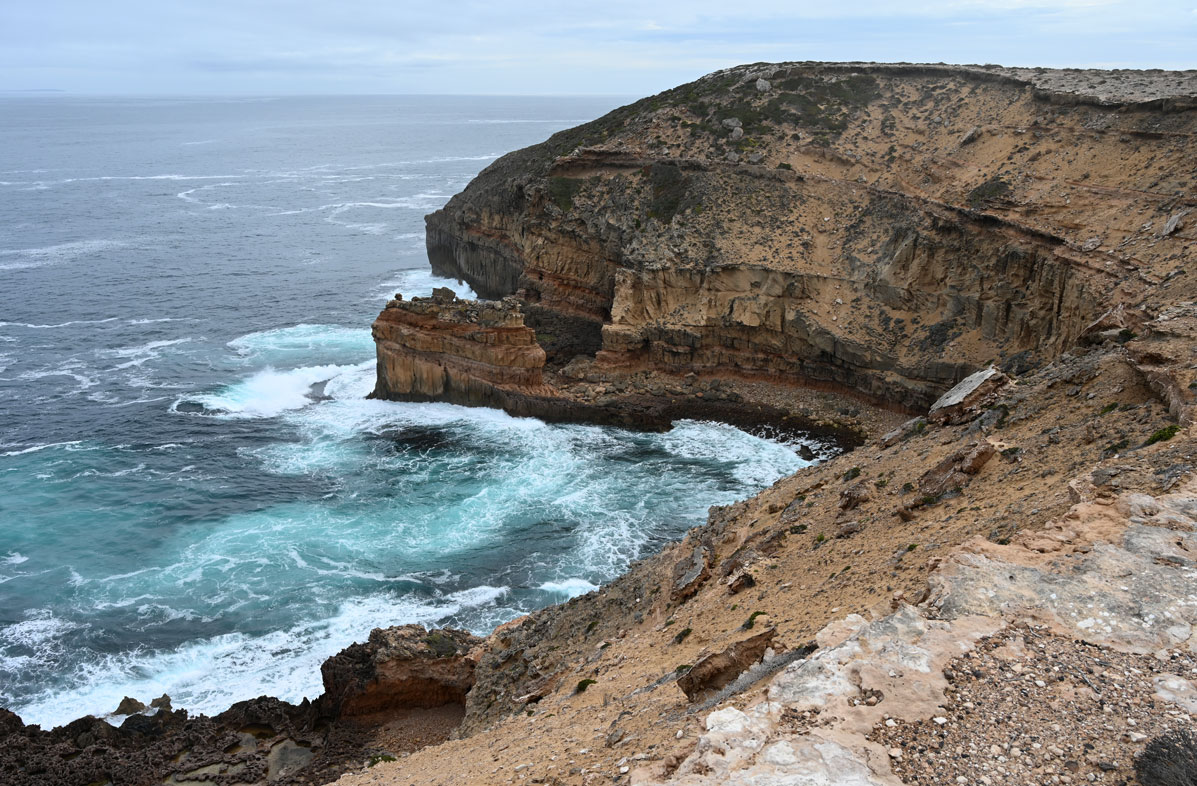
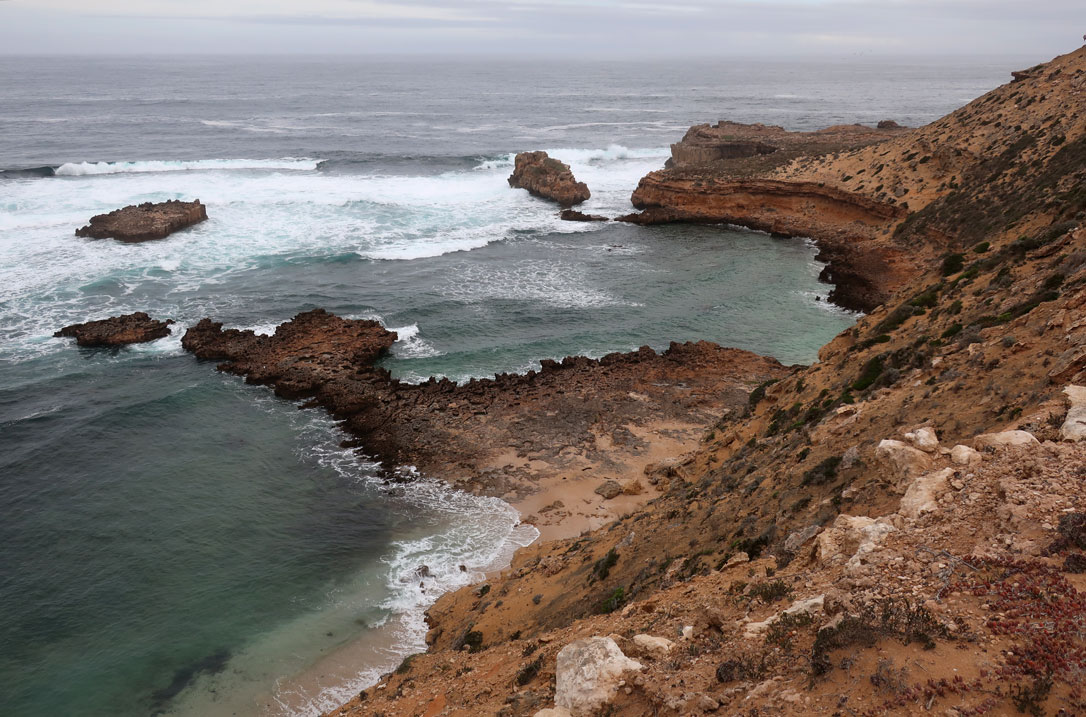


Next morning we awoke to steady, light rain which stayed with us all the way to Smoky Bay. The following day was fine with strong winds off the ocean which we braved to take a walk around the small fishing town and out along the wooden-piled, 300m-long jetty, which opened in 1912. From the jetty we watched several oyster boats being pulled from the water, each by its own tractor and trailer.

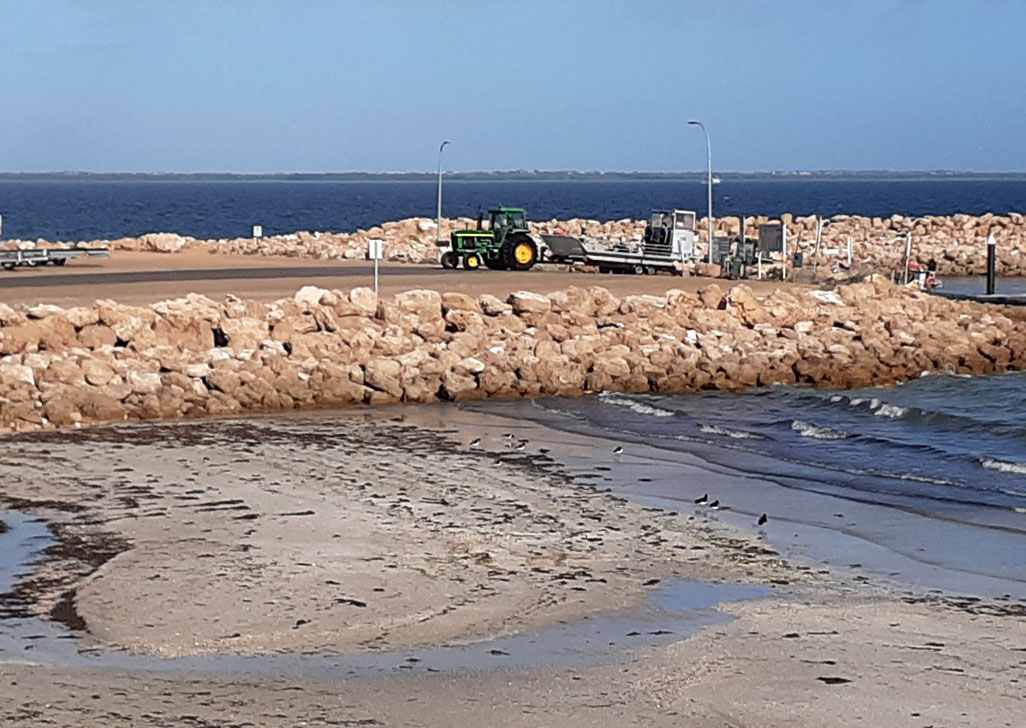
Looks and sounds wonderful indeed. Who would have thought there would be such a great silo at Cowell?! See you soon…stay safe please xx
LikeLike
The unexpected ones are always a treat. We appreciate your comments throughout our trip. xx
LikeLike